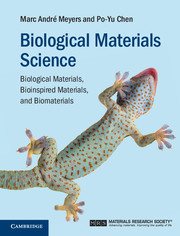Refine search
Actions for selected content:
5487 results in Thermal-fluids engineering
Subject Index
-
- Book:
- Advanced Computational Vibroacoustics
- Published online:
- 05 August 2014
- Print publication:
- 11 August 2014, pp 120-127
-
- Chapter
- Export citation
2 - Definition of the Vibroacoustic System
-
- Book:
- Advanced Computational Vibroacoustics
- Published online:
- 05 August 2014
- Print publication:
- 11 August 2014, pp 13-19
-
- Chapter
- Export citation
Author Index
-
- Book:
- Advanced Computational Vibroacoustics
- Published online:
- 05 August 2014
- Print publication:
- 11 August 2014, pp 117-119
-
- Chapter
- Export citation
5 - Structure Equations
-
- Book:
- Advanced Computational Vibroacoustics
- Published online:
- 05 August 2014
- Print publication:
- 11 August 2014, pp 29-41
-
- Chapter
- Export citation
Glossary
-
- Book:
- Advanced Computational Vibroacoustics
- Published online:
- 05 August 2014
- Print publication:
- 11 August 2014, pp 111-116
-
- Chapter
- Export citation
1 - Principal Objectives and a Strategy for Modeling Vibroacoustic Systems
-
- Book:
- Advanced Computational Vibroacoustics
- Published online:
- 05 August 2014
- Print publication:
- 11 August 2014, pp 1-12
-
- Chapter
- Export citation
7 - Computational Vibroacoustic Model
-
- Book:
- Advanced Computational Vibroacoustics
- Published online:
- 05 August 2014
- Print publication:
- 11 August 2014, pp 50-53
-
- Chapter
- Export citation
9 - Uncertainty Quantification in Computational Vibroacoustics
-
- Book:
- Advanced Computational Vibroacoustics
- Published online:
- 05 August 2014
- Print publication:
- 11 August 2014, pp 67-83
-
- Chapter
- Export citation
Frontmatter
-
- Book:
- Advanced Computational Vibroacoustics
- Published online:
- 05 August 2014
- Print publication:
- 11 August 2014, pp i-iv
-
- Chapter
- Export citation

Biological Materials Science
- Biological Materials, Bioinspired Materials, and Biomaterials
-
- Published online:
- 05 August 2014
- Print publication:
- 31 July 2014

Advanced Computational Vibroacoustics
- Reduced-Order Models and Uncertainty Quantification
-
- Published online:
- 05 August 2014
- Print publication:
- 11 August 2014
Part II - Biological materials
-
- Book:
- Biological Materials Science
- Published online:
- 05 August 2014
- Print publication:
- 31 July 2014, pp 155-156
-
- Chapter
- Export citation
12 - Bioinspired materials: traditional biomimetics
- from Part III - Bioinspired materials and biomimetics
-
- Book:
- Biological Materials Science
- Published online:
- 05 August 2014
- Print publication:
- 31 July 2014, pp 499-559
-
- Chapter
- Export citation
Frontmatter
-
- Book:
- Biological Materials Science
- Published online:
- 05 August 2014
- Print publication:
- 31 July 2014, pp i-iv
-
- Chapter
- Export citation
7 - Calcium-phosphate-based composites
- from Part II - Biological materials
-
- Book:
- Biological Materials Science
- Published online:
- 05 August 2014
- Print publication:
- 31 July 2014, pp 223-291
-
- Chapter
- Export citation
List of Boxes
-
- Book:
- Biological Materials Science
- Published online:
- 05 August 2014
- Print publication:
- 31 July 2014, pp xviii-xviii
-
- Chapter
- Export citation
Part III - Bioinspired materials and biomimetics
-
- Book:
- Biological Materials Science
- Published online:
- 05 August 2014
- Print publication:
- 31 July 2014, pp 497-498
-
- Chapter
- Export citation
9 - Biological elastomers
- from Part II - Biological materials
-
- Book:
- Biological Materials Science
- Published online:
- 05 August 2014
- Print publication:
- 31 July 2014, pp 355-396
-
- Chapter
- Export citation
Index
-
- Book:
- Biological Materials Science
- Published online:
- 05 August 2014
- Print publication:
- 31 July 2014, pp 620-628
-
- Chapter
- Export citation
13 - Molecular-based biomimetics
- from Part III - Bioinspired materials and biomimetics
-
- Book:
- Biological Materials Science
- Published online:
- 05 August 2014
- Print publication:
- 31 July 2014, pp 560-583
-
- Chapter
- Export citation
